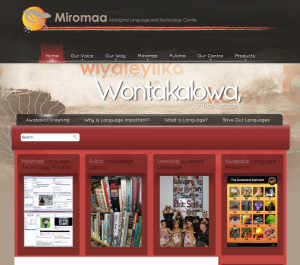Getting remote Indigenous communities online
Most remote Australian Indigenous communities have little or no access to digital technology. Last year, three internet-enabled terminals were installed as a trial in the remote communities of Burraluba Yuru Ngurra (Halls Creek WA), Binjari Top Camp (NT) and Bana Yarralji Bubu (Shiptons Flat QLD).
The terminals are robust, free standing units with vandal-resistant screens, keyboards and touchpads, designed to run 24/7 in the harshest conditions. Each has three screens and keyboards so several people can use them simultaneously. Educational games, books, and a child-friendly copy of Wikipedia were included as part of the content.
Source: http://theconversation.com/getting-remote-indigenous-communities-online-19549
Internet access in Aboriginal communities
The Internet is yet to make a difference in remote Aboriginal communities. Very few people there own a computer and even fewer are connected.
Source: https://www.creativespirits.info/aboriginalculture/economy/internet-access-in-aboriginal-communities#ixzz4tLrK4ltB
Home Internet for Remote Indigenous Communities
Only one household out of 30 in the Kwale Kwale, Mungalawuru, and Imangara communities in Central Australia is connected to the internet.
The Home Internet for Remote Indigenous Communities provides a baseline study of communication use in these three remote communities. It includes an overview of existing policies, demonstrating the significance of the intersection between communications and social policy for indigenous consumers living in remote communities.
Source: http://accan.org.au/files/SWIN-CLC-CATHomeInternet.pdf
Social media and digital technology use among Indigenous young people in Australia: a literature review
The use of social media and digital technologies has grown rapidly in Australia and around the world, including among Indigenous young people who face social disadvantage. Given the potential to use social media for communication, providing information and as part of creating and responding to social change, this paper explores published literature to understand how Indigenous Australian youth use digital technologies and social media, and its positive and negative impacts.
Source: https://equityhealthj.biomedcentral.com/articles/10.1186/s12939-016-0366-0
Is the Internet A Useful Resource For Indigenous Women Living In Remote Communities In Canada, Australia and New Zealand To Access Health Resources?
In the emerging Information economy, the internet is a very powerful resource. Yet for most Indigenous people, access to this resource is very limited. This report examines the digital divide in our society and how it affects Indigenous peoples in remote communities in Canada, Australia and New Zealand. Also explored is the issue of whether or not the internet is a viable resource for Indigenous women to access health resources, and other valuable information that promotes a holistic approach to health and well-being.
Source: http://www.yorku.ca/anthna/DigitalDivide.pdf
References:
Fisher, J. (2013, November 25). Getting remote Indigenous communities online. Retrieved September 21, 2017, from http://theconversation.com/getting-remote-indigenous-communities-online-19549
Rennie, E, Crouch, A, Wright, A & Thomas, J 2011, Home Internet for Remote Indigenous Communities, Australian Communications Consumer Action Network, Sydney. Retrieved September 21, 2017, from http://accan.org.au/files/SWIN-CLC-CATHomeInternet.pdf
Rice, E. S., Haynes, E., Royce, P., & Thompson, S. C. (2016, May 25). Social media and digital technology use among Indigenous young people in Australia: a literature review. Retrieved September 21, 2017, from https://equityhealthj.biomedcentral.com/articles/10.1186/s12939-016-0366-0
Smillie – Adjarkwa , C. (2005). Is the Internet A Useful Resource For Indigenous Women Living In Remote Communities In Canada, Australia and New Zealand To Access Health Resources? [PDF]. National Network for Aboriginal Mental Health Research. Retrieved September 21, 2017, from http://www.yorku.ca/anthna/DigitalDivide.pdf
Spirits, J. K. (n.d.). Internet access in Aboriginal communities. Retrieved September 21, 2017, from https://www.creativespirits.info/aboriginalculture/economy/internet-access-in-aboriginal-communities

